#Colubroidea
Explore tagged Tumblr posts
Photo
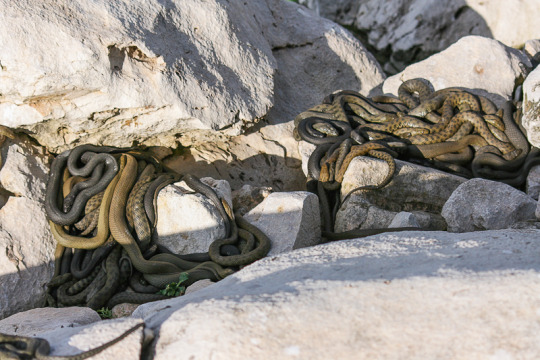
Dice snake (Natrix tessellata)
Photo by Aleksandar Simović
#dice snake#natrix tessellata#natrix#natricinae#natricidae#colubridae#colubroidea#endoglyptodonta#colubriformes#colubroides#caenophidia#afrophidia#alethinophidia#serpentes#squamata#lepidosauria#sauria#diapsida#reptilia#sauropsida#tetrapoda#vertebrata#chordata
2K notes
·
View notes
Photo

Ring-necked Snake (via USFWS Midwest Region)
Photo by Grayson Smith/USFWS.
#Ringneck Snake#Diadophis punctatus#Diadophis#Dipsadinae#Colubridae#Colubroidea#Alethinophidia#Serpentes#Squamata#snake
21 notes
·
View notes
Text
New slug eater snake species discovered.
Hoser, R. T. 2022. Hiding in plain sight! Three new species of Slug Eater snakes (Serpentes: Colubroidea: Duberria Fitzinger, 1826) from South Africa. Australasian Journal of Herpetology 58:21-27. Published 28 June 2022. Full text at: http://www.smuggled.com/AJH-58-Pages-21-27.pdf
2 notes
·
View notes
Text
Science on fire!
Raymond Hoser is Snake catcher ®
Here are his scientific papers for 2022 (so far anyway) – over 20!
244. Hoser, Raymond. 2022 Daraninanura brevipalmata daranini subsp. nov. and Daraninanura brevipalmata andypadgetti subsp. nov., two new frogs from Eastern Australia. Australasian Journal of Herpetology 56: 51-54.
245. Hoser, Raymond. 2022 Delma honlami sp. nov.: A new species of Pygopodid legless lizard from South Australia (Squamata: Gekkota: Pygopodidae: Delma: Honlamopus). Australasian Journal of Herpetology 59: 13-16.
246. Hoser, Raymond. 2022 Euanedwardsserpens subradiatus (Schlegel, 1837) revisited and formally divided into six allopatric species based on morphological and genetic divergence. Australasian Journal of Herpetology 58: 28-39.
247. Hoser, Raymond. 2022 Proablepharus Fuhn, 1969 sensu lato revisited. Underestimated species diversity in these tiny Australian skinks leads to resurrection of two old species names and the formal description of eight new species and three new subspecies (Squamata:Scincoidea). Australasian Journal of Herpetology 57: 3-27.
248. Hoser, Raymond. 2022 A long overdue split: Russell’s Viper sensu lato is formally split six ways (Squamata: Serpentes: Viperidae: Daboia). Australasian Journal of Herpetology 58: 51-63.
249. Hoser, Raymond. 2022 A new species of Notopseudonaja Wells, 2002 (Squamata:
Serpentes: Elapidae). Australasian Journal of Herpetology 56: 44-47.
13
13
250. Hoser, Raymond. 2022 A new species of skink lizard Calyptotis De Vis, 1886 from
Queensland, Australia (Reptilia: Squamata: Scincidae). Australasian Journal of Herpetology 58: 16-
20.
251. Hoser, Raymond. 2022 A new species within the Odatria timorensis (Squamata: Varanidae)
species complex. Australasian Journal of Herpetology 55: 54-56.
252. Hoser, Raymond. 2022 A new subspecies of Lace Monitor Varanus varius (White,
1790). Australasian Journal of Herpetology 55: 57-59.
253. Hoser, Raymond. 2022 A revision of the taxonomy of the Australian skink in the
genus Acritoscincus Wells and Wellington, 1985 (AKA Bassiana Hutchinson et al. 1990), resulting in
the formal division into three subgenera and the recognition and descriptions of new
species. Australasian Journal of Herpetology 56: 22-43.
254. Hoser, Raymond. 2022 African viper taxonomy revisited. The classification of Hoser (2013)
stands the tests of new technology and time; with a new subgenus and a new species from Southern
Africa formally named (Serpentes: Viperidae). Australasian Journal of Herpetology 56: 57-63.
255. Hoser, Raymond. 2022 Antaresia (Pythonidae), Taxonomy and Nomenclature: Fixing up
errors and oversights including that Antaresia maculosa peninsularis Esquerre et al. 2021 is a junior
synonym of A. maculosa brentonoloughani Hoser, 2003. ICZN Code Rule of Priority applies (Article
23). Australasian Journal of Herpetology 59: 3-9.
256. Hoser, Raymond. 2022 Dumped rubbish! Is a lack of oviposition sites a potential population
limiting factor for southern Australian skinks? Australasian Journal of Herpetology 58: 3-5.
257. Hoser, Raymond. 2022 Eleven new species of Australian gecko within the
genus Heteronotia Wermuth, 1965. Australasian Journal of Herpetology 55: 3-48.
258. Hoser, Raymond. 2022 Greater diversity of skink species in south-east Australia than
previously realized: Carinascincus Wells and Wellington, 1985 sensu lato is further
divided. Australasian Journal of Herpetology 59: 48-64.
259. Hoser, Raymond. 2022 Hiding in plain sight! Three new species of Slug Eater snakes
(Serpentes: Colubroidea: Duberria Fitzinger, 1826) from South Africa. Australasian Journal of
Herpetology 58: 21-27.
260. Hoser, Raymond. 2022 Hiding in plain sight. A previously unrecognized biogeographical
barrier in Australia formed by an event of biblical proportions. Five new species of skink lizard from
south-west Victoria, three more closely related species from New South Wales and another from
South Australia. Australasian Journal of Herpetology 56: 3-21.
261. Hoser, Raymond. 2022 Incubation and hatching of juvenile Marbled Gecko Christinus
marmoratus (Gray, 1845). Australasian Journal of Herpetology 56: 55-56.
262. Hoser, Raymond. 2022 Incubation and hatching of juvenile Marbled Gecko Christinus
marmoratus (Gray, 1845). Australasian Journal of Herpetology 56: 55-56.
263. Hoser, Raymond. 2022 New species of freshwater Crocodile from Northern
Australia. Australasian Journal of Herpetology 56: 48-50.
264. Hoser, Raymond. 2022 Overlooked genera and species of Australian burrowing skink
(Squamata:Scincidae). Australasian Journal of Herpetology 59: 32-47.
265. Hoser, Raymond. 2022 Overlooked! Formal description of a new species of green viper from
Eastern India and Burma. Australasian Journal of Herpetology 58: 47-50.
266. Hoser, Raymond. 2022 The Australian skink genus Notoscincus Fuhn, 1969
revised!. Australasian Journal of Herpetology 59: 21-31.
267. Hoser, Raymond. 2022 The Iconic Australian Copper-tailed Skink Ctenotus
taeniolatus (White, 1790) split. A sign of severely under-estimated species diversity in Australia’s
smaller lizards. Australasian Journal of Herpetology 59: 17-20.
268. Hoser, Raymond. 2022 The inevitable further break up of the monotypic Australian skink
genus Saiphos Gray, 1831. Australasian Journal of Herpetology 58: 6-15.
269. Hoser, Raymond. 2022 The inevitable further break up of the skink genus Saproscincus Wells and Wellington (1984) into two genera, each split to subgenera and the formal description of a new species from North Queensland, Australia. Australasian Journal of Herpetology 57: 53-64.
270. Hoser, Raymond. 2022 The inevitable split up of the common Australian skink lizard Allengreerus delicata AKA Lampropholis delicata into resurrected and new species (Reptilia: Squamata: Scincidae). Australasian Journal of Herpetology 57: 28-52.
271. Hoser, Raymond. 2022 Twenty one new species and eleven new subspecies of Asian Flying Dragon Lizard (Squamata: Sauria: Agamidae: Draconinae: Draco). Australasian Journal of Herpetology 60: 1-64.
272. Hoser, Raymond. 2022 Two more new species within the Odatria glauerti (Squamata: Varanidae) species complex. Australasian Journal of Herpetology 55: 49-53.
273. Hoser, Raymond. 2022 Two new species of Cobra from South-east Asia (Serpentes: Elapidae: Naja). Australasian Journal of Herpetology 58: 40-46.
274. Hoser, Raymond. 2022 Two new species of Pipe Snake, Genus Cylindrophis (Squamata: Cylindrophiidae) from Timor and Flores, Indonesia. Australasian Journal of Herpetology 59: 10-12.
275. Hoser, Raymond. 2022 Two new subspecies of Thorny Devil, Moloch horridus Gray, 1841. Australasian Journal of Herpetology 55: 60-62.
0 notes
Photo
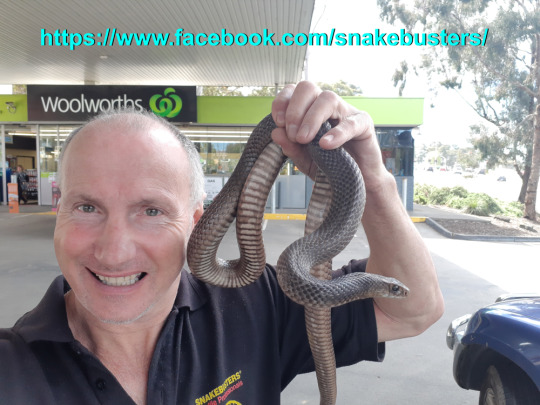
Australasian Journal of Herpetology ® Issue 58, published 28 June 2022 List of new taxa formally named. All major papers are downloadable below the list.
Australasian Journal of Herpetology ® Issue 58, published 28 June 2022
New Subgenus Oxyadaboia Hoser, 2022. (Viper snake) New Species Calyptotis greerae Hoser, 2022. (Skink lizard, Australia) Daboia (Daboia) crottyi Hoser, 2022. (Viper snake, Pakistan) Daboia (Oxyadaboia) oxyi Hoser, 2022. (Viper snake, Asia) Daboia (Oxyadaboia) sloppi Hoser, 2022. (Viper snake, Asia) Duberria edwardsi Hoser, 2022. (Slug eater snake, Africa) Duberria woolfi Hoser, 2022. (Slug eater snake, Africa) Duberria hoserae Hoser, 2022. (Slug eater snake, Africa) Euanedwardsserpens adelynhoserae Hoser, 2022. (Rat snake, Indonesia) Euanedwardsserpens euanedwardsi Hoser, 2022. (Rat snake, Indonesia) Euanedwardsserpens floresensis Hoser, 2022. (Rat snake, Indonesia) Euanedwardsserpens sumbaensis Hoser, 2022. (Rat snake, Indonesia) Euanedwardsserpens wetarensis Hoser, 2022. (Rat snake, Indonesia) Naja reduci Hoser, 2022. (Cobra snake, Indonesia) Naja latebras Hoser, 2022. (Cobra snake, South-east Asia) Saiphos hoserae Hoser, 2022. (Skink lizard, Australia) Saiphos shanksi Hoser, 2022. (Skink lizard, Australia) Saiphos wellsi Hoser, 2022. (Skink lizard, Australia) Saiphos wellingtoni Hoser, 2022. (Skink lizard, Australia) Viridovipera (Simpsonvipera) paracaeruleus Hoser, 2022. (Viper snake, Asia) New Subspecies Calyptotis scutirostrum bunyaensis Hoser, 2022. (Skink lizard, Australia) Viridovipera (Simpsonvipera) paracaeruleus ashokcaptaini Hoser, 2022. (Viper snake, Asia)
Front cover.
Page two - contents.
Dumped rubbish! Is a lack of oviposition sites a potential population limiting factor for southern Australian skinks? ... Raymond T. Hoser, pp. 3-5.
The inevitable further break up of the monotypic Australian skink genus Saiphos Gray, 1831. ... Raymond T. Hoser, pp. 6-15.
A new species of skink lizard Calyptotis De Vis, 1886 from Queensland, Australia (Reptilia: Squamata: Scincidae). ... Raymond T. Hoser, pp. 16-20.
Hiding in plain sight! Three new species of Slug Eater snakes (Serpentes: Colubroidea: Duberria Fitzinger, 1826) from South Africa. ... Raymond T. Hoser, pp. 21-27.
Euanedwardsserpens subradiatus (Schlegel, 1837) revisited and formally divided into six allopatric species based on morphological and genetic divergence. ... Raymond T. Hoser, pp. 28-39.
Two new species of Cobra from South-east Asia (Serpentes: Elapidae: Naja). ... Raymond T. Hoser, pp. 40-46.
Overlooked! Formal description of a new species of Green Viper from Eastern India and Burma. ... Raymond T. Hoser, pp. 47-50.
A long overdue split: Russell’s Viper sensu lato is formally split six ways (Squamata: Serpentes: Viperidae: Daboia) ... Raymond T. Hoser, pp. 51-63.
Back cover.
All of AJH Issue 58, including covers in one big pdf file (64 pages).
All of the newly discovered and formally named genera and species in AJH Issue 58.
Full Zoobank listing of all species, genera, family and taxonomic works of the Snakeman Raymond Hoser as of 12 June 2022 (nearly 2,000 entities named, nearly 1,000 species and subspecies) (45 pages).
ICZN Case 3601 ... ICZN Ruled on 30 April 2021 that all published issues of Australasian Journal of Herpetology ® is validly published according to the International Code of Zoological Nomenclature and also that all new names within are valid and have priority over later names.
Return to index for AJH Published Issues Learn more at https://www.smuggled.com/AJH-I58-Full-Newly-named-Genera-and-species-list.htm
0 notes
Photo

Jararaca (Bothrops moojeni HOGE, 1966) by Arystene Nicodemo Viperidae, Crotalinae, Colubroidea, Caenophidia, Alethinophidia, Serpentes, Squamata (snakes)Subspecies. https://flic.kr/p/2ndvzaP
0 notes
Text
Spitting cobra venom didn't evolve to kill – just to put us in a world of pain
https://sciencespies.com/nature/spitting-cobra-venom-didnt-evolve-to-kill-just-to-put-us-in-a-world-of-pain/
Spitting cobra venom didn't evolve to kill – just to put us in a world of pain
Like pappy used to say: if you see it writhe and hiss, give it a miss. Humans have passed on similar nuggets of wisdom since time immemorial, giving us a healthy (and sometimes less than healthy) respect for backing away from snakes.
Yet the fact snake bites hurt is usually an accident of nature – virtually every single species of snake evolved the ability to inject venom to catch prey, rather than for defence. But there are exceptions to the rule – new research shows some snakes actually evolved their venom specifically to drive away potential predators, including us. And it’s excruciatingly painful for good reason.
The study by an international team of scientists demonstrates a unique kind of venom and envenomation strategy evolved on at least three different occasions.
Spitting cobras and rinkhals are closely related snakes capable of squirting venom far enough for an unwary human to cop an eyeful.
The effects aren’t pleasant. Chemicals in the spitting cobra’s venom chew away at the cornea, causing intense pain and – in high enough doses – blindness.
Fangs like water-pistols and blinding venom aren’t exactly suited to bringing down a quick-footed meal, so researchers saw this as a perfect opportunity to investigate the evolutionary history of this particularly unusual characteristic.
Snakes first evolved an ability to inject venom somewhere between 60 and 80 million years ago. Since then, thousands of species in the superfamily Colubroidea have tweaked the original recipe and modified their mouth bits to suit their dietary needs.
Using fossils as calibration, the researchers used molecular dating techniques on the genomes of a number of true spitting cobra (Naja species), rinkhals (Hemachatus haemachatus), and non-spitting relatives (Walterinnesia aegyptia and Aspidelaps scutatus).
The results suggested African spitting cobras developed their eye-watering habit between 6.7 and 10.7 million years ago. Their Asian relatives followed suit 4 million years later.
Rinkhals were hard to pin down but must have developed their ability since parting from other spitting cobras more than 17 million years ago.
An analysis of their venoms revealed their make-up had more in common with each other than non-spitting relatives, with the exception of the more neurotoxic recipe belonging to Naja philippinensis.
The agonising effects of the venom’s chemistry were also put to the test using living tissue and nerve samples.
“We tested how venom components affected pain-sensing nerves and showed that spitting cobra venoms are more effective at causing pain than their non-spitting counterparts,” says neuropharmacologist Irina Vetter from the University of Queensland in Australia.
Added together, the sum of the results implies spitting cobras and rinkhals repurposed their venom and fangs independently, transforming into defence mechanisms capable of detracting large predators.
And just who were those large predators in each case? We can only guess, but the researchers argue there are some good reasons to think our ancestors fit the bill, citing evidence of snakes influencing primate neurobiology and behaviour.
Humans and chimpanzees diverged roughly around the same time African spitting cobras evolved the trait. We’re also likely to identify potentially venomous snakes and attack from a short distance, putting pressure on spitting as a suitable means of venom delivery.
Of course, it’s all speculation based on loosely circumstantial evidence at this point, but the ideas warrant further exploration.
“It is intriguing to think that our ancestors may have influenced the origin of this defensive chemical weapon in snakes,” says snake venom expert Nick Casewell from the University of Liverpool.
Ironically, by understanding the evolutionary relationship between toxins and our own bodies, we’re better positioned to identify potential mechanisms for new classes of medicine.
The analgesic properties of rattlesnake venom, for example, could give millions of people living with neuropathic pain a chance of relief.
“Pain-causing toxins from animal venoms can be useful tools to help us understand pain signalling at a molecular level and are helping us to identify new targets for future painkillers,” says University of Queensland molecular biologist Sam Robinson.
It’s time we called a truce with the spitting cobra. We’ll keep our distance, and appreciate their skills from afar.
This research was published in Science.
#Nature
1 note
·
View note
Text
Organism of the week 18- Ahaetulla prasina

My organism of the week is the Beautiful Ahaetulla Prasina snake. It is native to Asia. This animal can blend in with the environment it is it. If that environment is green. So be worried if you're going into a jungle in Asia where you can't see anything but green leaves.
Colubridae, Ahaetuliinae, Colubroidea, Caenophidia, Alethinophidia, Serpentes, Squamata (snakes
They love to eat small animals mostly mammals. they live and south Asia and that enjoy the warm environment as most snakes do. Baby snakes come from Eggs.
Sources
http://reptile-database.reptarium.cz/species?genus=Ahaetulla&species=prasina
2 notes
·
View notes
Photo
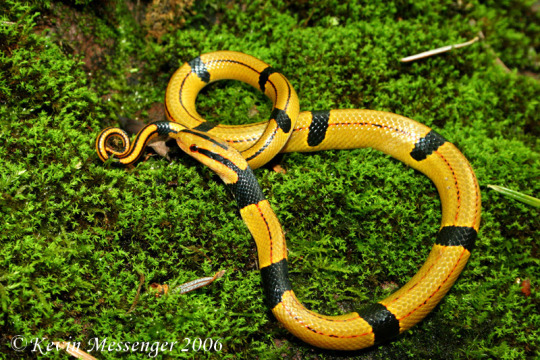
Bamboo ratsnake (Oreocryptophis porphyraceus vaillanti)
Photo by Kevin Messenger
#bamboo ratsnake#oreocryptophis porphyraceus vaillanti#oreocryptophis porphyraceus#oreocryptophis#colubrinae#colubridae#colubroidea#endoglyptodonta#colubriformes#colubroides#caenophidia#afrophidia#alethinophidia#serpentes#squamata#lepidosauria#sauria#diapsida#reptilia#sauropsida#tetrapoda#vertebrata#chordata
64 notes
·
View notes
Photo
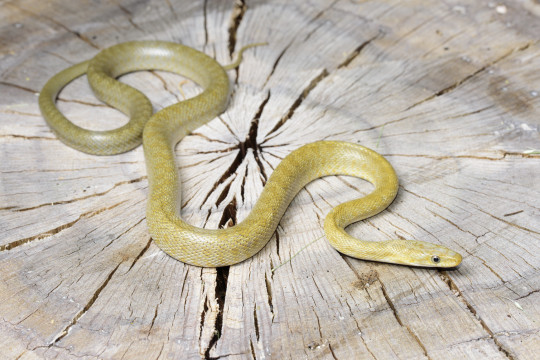
Green rat snake (Senticolis triaspis)
Photo by Steven Wong
#green rat snake#senticolis triaspis#senticolis#lampropeltini#colubrinae#colubridae#colubroidea#endoglyptodonta#colubriformes#colubroides#caenophidia#afrophidia#alethinophidia#serpentes#squamata#lepidosauria#sauria#diapsida#reptilia#sauropsida#tetrapoda#vertebrata#chordata
19 notes
·
View notes
Photo
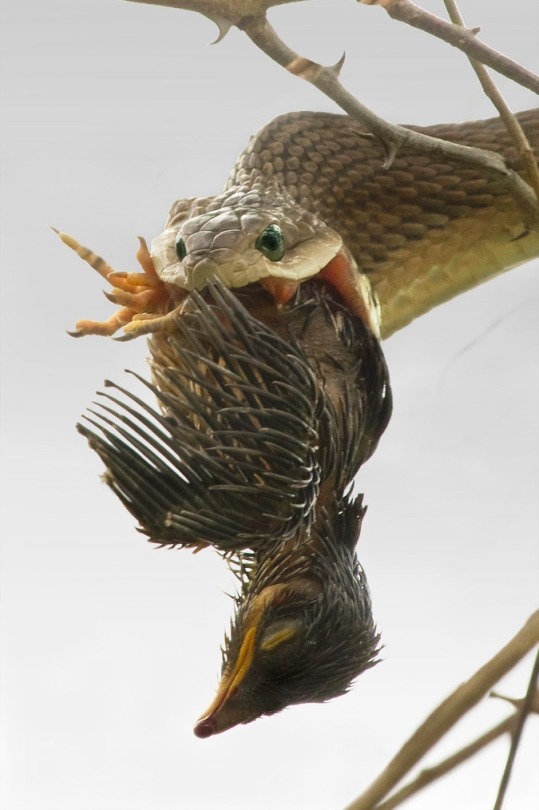
Boomslang (Dispholidus typus)
Photo by Hennie van Heerden
#predation#boomslang#dispholidus typus#dispholidus#colubrinae#colubridae#colubroidea#endoglyptodonta#colubriformes#colubroides#caenophidia#afrophidia#alethinophidia#serpentes#squamata#lepidosauria#sauria#diapsida#reptilia#sauropsida#tetrapoda#vertebrata#chordata
35 notes
·
View notes
Photo
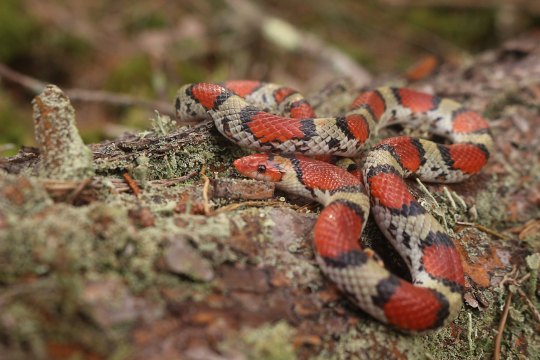
Scarlet snake (Cemophora coccinea)
Photo by Dave Fitzpatrick
#scarlet snake#cemophora coccinea#cemophora#lampropeltini#colubrinae#colubridae#colubroidea#endoglyptodonta#colubriformes#colubroides#caenophidia#afrophidia#alethinophidia#serpentes#squamata#lepidosauria#sauria#diapsida#reptilia#sauropsida#tetrapoda#vertebrata#chordata
10 notes
·
View notes
Photo

Southern hognose (Heterodon simus)
Photo by Ian Deery
#southern hognose#hognose#heterodon simus#heterodon#carphophiinae#dipsadinae#colubridae#colubroidea#endoglyptodonta#colubriformes#colubroides#caenophidia#afrophidia#alethinophidia#serpentes#squamata#lepidosauria#sauria#diapsida#reptilia#sauropsida#tetrapoda#vertebrata#chordata
17 notes
·
View notes
Photo

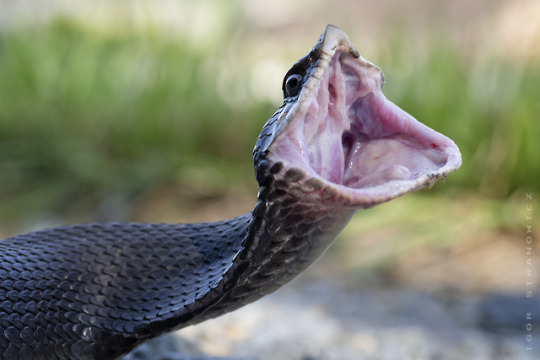

Eastern hog-nosed snake (Heterodon platirhinos)
Photo by Igor Siwanowicz
#eastern hog nosed snake#hog nosed snake#heterodon platirhinos#heterodon#carphophiinae#dipsadinae#colubridae#colubroidea#endoglyptodonta#colubriformes#colubroides#caenophidia#afrophidia#alethinophidia#serpentes#squamata#lepidosauria#sauria#diapsida#reptilia#sauropsida#tetrapoda#vertebrata#chordata
16 notes
·
View notes
Photo
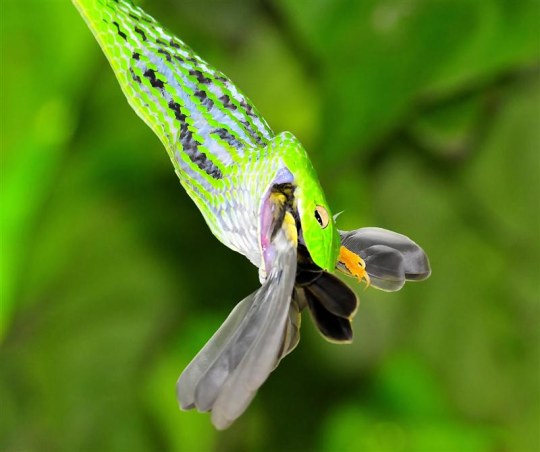
Oriental whip snake (Ahaetulla prasina)
Photo by Johnny Wee
#predation#oriental whip snake#asian vine snake#whip snake#vine snake#ahaetulla prasina#ahaetulla#ahaetuliinae#colubridae#colubroidea#colubroides#caenophidia#afrophidia#alethinophidia#serpentes#squamata#lepidosauria#sauria#diapsida#reptilia#sauropsida#tetrapoda#vertebrata#chordata
18 notes
·
View notes
Photo
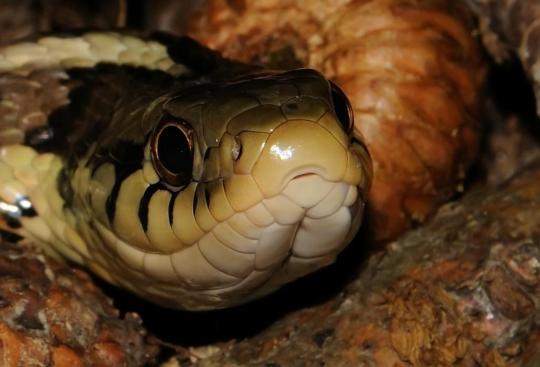
Eastern garter snake (Thamnophis sirtalis sirtalis)
Photo by Richard Orr
#eastern garter snake#common garter snake#garter snake#thamnophis sirtalis sirtalis#thamnophis sirtalis#thamnophis#natricinae#natricidae#colubridae#colubroidea#endoglyptodonta#colubriformes#colubroides#caenophidia#afrophidia#alethinophidia#serpentes#squamata#lepidosauria#sauria#diapsida#reptilia#sauropsida#tetrapoda#vertebrata#chordata
9 notes
·
View notes